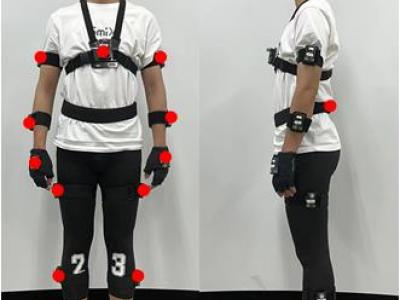Wearable Sensing

The popularity of wearable physiological recording devices has opened up new possibilities for the assessment of personality traits in everyday life. Compared with traditional questionnaires or laboratory assessments, wearable device-based measurements can collect rich data about individual physiological activities in real-life situations without interfering with normal life, enabling a more comprehensive description of individual differences. The present study aimed to explore the assessment of individuals’ Big-Five personality traits by physiological signals in daily life situations.
- Categories:
 Views
Views
The popularity of wearable physiological recording devices has opened up new possibilities for the assessment of personality traits in everyday life. Compared with traditional questionnaires or laboratory assessments, wearable device-based measurements can collect rich data about individual physiological activities in real-life situations without interfering with normal life, enabling a more comprehensive description of individual differences. The present study aimed to explore the assessment of individuals’ Big-Five personality traits by physiological signals in daily life situations.
- Categories:
 Views
Views
The popularity of wearable physiological recording devices has opened up new possibilities for the assessment of personality traits in everyday life. Compared with traditional questionnaires or laboratory assessments, wearable device-based measurements can collect rich data about individual physiological activities in real-life situations without interfering with normal life, enabling a more comprehensive description of individual differences. The present study aimed to explore the assessment of individuals’ Big-Five personality traits by physiological signals in daily life situations.
- Categories:
 831 Views
831 Views
The dataset contains physiological data collected using a wearable device from 5 children with autism (all males) during interaction sessions with different stimuli. The dataset (QU_Autism_dataset.csv) is related to our investigations of using wearable devices to detect the occurrence of challenging behaviors among children with autism. The study used a wearable device that acquired the acceleration (ACC) (i.e., in X, Y, Z), electrodermal activity (EDA), temperature (TEMP), heart rate (HR), and blood volume pulse (BVP).
- Categories:
 458 Views
458 Views
Nowadays, more and more machine learning models have emerged in the field of sleep staging. However, they have not been widely used in practical situations, which may be due to the non-comprehensiveness of these models' clinical and subject background and the lack of persuasiveness and guarantee of generalization performance outside the given datasets. Meanwhile, polysomnogram (PSG), as the gold standard of sleep staging, is rather intrusive and expensive. In this paper, we propose a novel automatic sleep staging architecture calle
- Categories:
 192 Views
192 ViewsHuman activity data based on wearable sensors, such as the Inertial Measurement Unit (IMU), have been widely used in human activity recognition. However, most publicly available datasets only collected data from few body parts and the type of data collected is relatively homogeneous. Activity data from local body parts is challenging for recognizing specific activities or complex activities. Hence, we create a new HAR dataset which is colledted from the project named MPJA HAD: A Multi-Position Joint Angles Dataset for Human Activity Recognition Using Wearable Sensors.
- Categories:
 1633 Views
1633 ViewsWe are presenting electromyography (EMG) and metabolic cost data collected during the optimization of a semi-active hip exoskeleton concept using impedance control at varying walking speeds. We collected 2-minute estimations of metabolic cost across 30 combinations of impedance parameters (stiffness and reference angle) to predict the most metabolically beneficial parameter set.
- Categories:
 213 Views
213 ViewsPlease cite the following paper when using this dataset:
N. Thakur and C.Y. Han, “An Exploratory Study of Tweets about the SARS-CoV-2 Omicron Variant: Insights from Sentiment Analysis, Language Interpretation, Source Tracking, Type Classification, and Embedded URL Detection,” Journal of COVID, 2022, Volume 5, Issue 3, pp. 1026-1049
Abstract
- Categories:
 1708 Views
1708 Views
The use of modern Mobile Brain-Body imaging techniques, combined with hyperscanning (simultaneous and synchronous recording of brain activity of multiple participants) has allowed researchers to explore a broad range of different types of social interactions from the neuroengineering perspective. In specific, this approach allows to study such type of interactions under an ecologically valid approach.
- Categories:
 412 Views
412 Views


